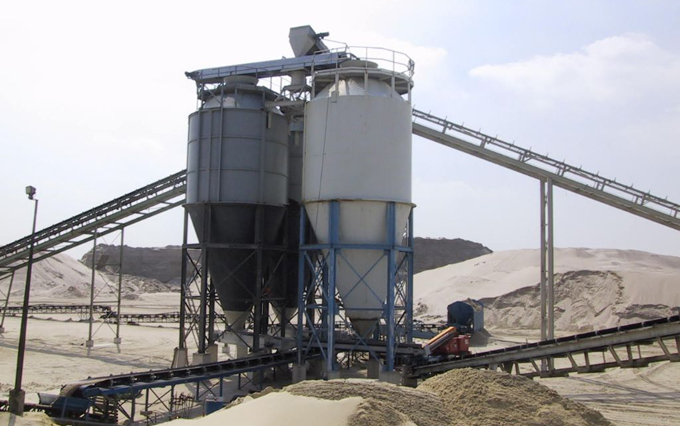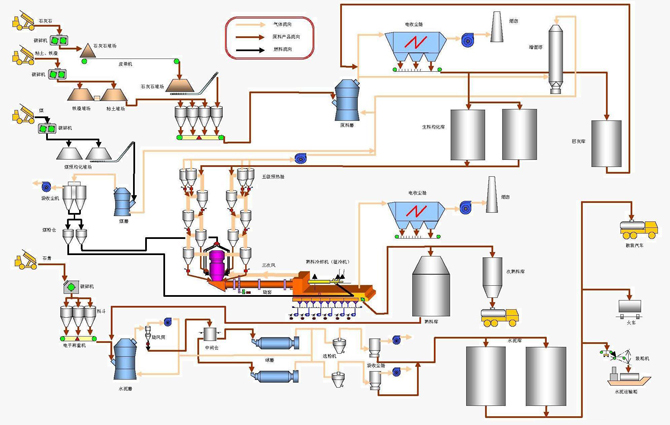Cement is an important construction materials, it has widely used in construction industry and plays an important role for the social and economic development. According the application, cement can be divided into cement and special cement. General, cement according to the the main water rigid material name is divided into portland cement, aluminum acid salt cement, aluminum sulfur acid salt cement, iron and aluminum acid salt cement, fluorine aluminum acid salt cement, phosphate cement etc.
Cement production process
In the cement manufacturing process, limestone, sand, shale, clay, and iron ore are used as main raw materials. The whole cement process in clued four stage: raw material crushing, calcination, cement grinding, packaging and distribution.
Raw material crushing
After the mining, most important raw material have big particle size and higher hardness, in oder get higher efficiency, most of the raw material need to crush to suitable size. Customer need use jaw crusher and impact crusher to crush them to suitable size which can meet next stage. Some time, customer also have to use ball mill or vertical mill, in order to get more thin powder. The raw materials are ground to a size where the majority of the materials are less than 75 microns. Materials exiting the mill are called “slurry” and have flowability characteristics. This slurry is pumped to blending tanks and homogenized to insure the chemical composition of the slurry is correct. Following the homogenization process, the slurry is stored in tanks until required. In the dry process, each raw material is proportioned to meet a desired chemical composition and fed to either a rotating ball mill or vertical roller mill. The raw materials are dried with waste process gases and ground to a size where the majority of the materials are less than 75 microns. The kiln feed is pneumatically blended to insure the chemical composition of the kiln feed is well homogenized and then stored in silos until required.
Calcination
The equipment is mainly has calcination clinker shaft kiln and rotary kiln two kinds, shaft kiln applicable to the production of small factory, big and medium-sized factory appropriate USES rotary kiln.

Raw material are complete preheating and precalcining in the cyclone preheater, next procedure is into the rotary kiln in the firing of clinker. In rotary kiln, carbonate further quickly decomposes and start a series of solid reaction, then form the important material in cement clinker. As the material temperature close, mineral will become liquid, dissolved in the liquid phase reactions and form a (clinker). Clinker firing, temperature began to drop. Finally, cement clinker cooling machine will cool the rotary kiln of high temperature clinker to a temperature which downstream conveying, storage tanks and cement machine could bear. At the same time, recovery afterheat of the high temperature clinker, so as to improve the system of the thermal efficiency and quality of materials.
Cement regrinding
After calcination, the cement clinker need to regrind to final cement products. Fineness of the final products, amount of gypsum added, and the amount of process additions added are all varied to develop a desired performance in each of the final cement products.
Packaging and distribution
Each cement product is stored in an individual bulk silo. Then bulk cement can be distributed to customer site by truck, rail, or water.
